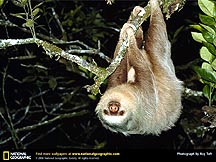 Using a single bone to estimate the weight of an extinct animal, like we did last month, beats consulting the Psychic Hotline, but not by much. Scientists usually start with a weight-bearing bone like the femur. Unfortunately, fossil skeletons are usually incomplete and the bones fragmentary. When nothing else is available they look to tooth dimensions, jaw length, the thickness of a bone’s cortex, even the width of a joint (Scott, 1990). . . the equations are as numerous as the techniques for measuring the bones or the pieces thereof. (photo borrowed from)
Using a single bone to estimate the weight of an extinct animal, like we did last month, beats consulting the Psychic Hotline, but not by much. Scientists usually start with a weight-bearing bone like the femur. Unfortunately, fossil skeletons are usually incomplete and the bones fragmentary. When nothing else is available they look to tooth dimensions, jaw length, the thickness of a bone’s cortex, even the width of a joint (Scott, 1990). . . the equations are as numerous as the techniques for measuring the bones or the pieces thereof. (photo borrowed from)
In theory, femurs are simply columns supporting a TBD  weight, subject to forces of tension and compression that engineers have understood for 2,000 years. Distal limb bones share the load in uncertain ways and can mislead–cranial measurements even more. Measurements directly related to the bone’s weight-bearing capacity (e.g. cross-section) promise the best results, but how do you measure something as irregular as a sloth femur? Femur length brings a much higher margin of error (Scott, 1990).
weight, subject to forces of tension and compression that engineers have understood for 2,000 years. Distal limb bones share the load in uncertain ways and can mislead–cranial measurements even more. Measurements directly related to the bone’s weight-bearing capacity (e.g. cross-section) promise the best results, but how do you measure something as irregular as a sloth femur? Femur length brings a much higher margin of error (Scott, 1990).
Our formula, like many others, is based on correlations derived from ungulates, for which there is a wide sample, but is that baseline relevant to ground sloths? The standard estimating error is 42%, applied to other ungulates. In other words, if our sloth were a moose, and we knew for sure ground sloths were strictly quadrupedal, didn’t have large weight-bearing tails, and their mass was distributed like the average mammal (i.e. 60% on the forefeet and 40% on hind feet, Alexander, 1985), then we could be 95% sure our sloth weighed between 453 and 5,205 pounds.
A baseline drawn from living Xenarthrans is hopeless for narrowing the estimate. We’re trying to cross a chasm of million years of separate evolution, significant disparities in habitat and life-style, and a huge size difference. . . .  We might average estimates derived from other bones, but given the scarcity of fossils, the chance of finding that same combination of bones at another site is virtually nil. Comparing different animals using different bones would only increase the expected error. For all of its flaws, Greg’s methodology is still the best option. (sloth photo borrowed from)
We might average estimates derived from other bones, but given the scarcity of fossils, the chance of finding that same combination of bones at another site is virtually nil. Comparing different animals using different bones would only increase the expected error. For all of its flaws, Greg’s methodology is still the best option. (sloth photo borrowed from)
Why bother when the potential for error is obviously so great? Paleoecologists can draw a wide range of fundamental conclusions from an estimate of an animal’s mass including metabolic rate, food intake, foraging time, forage quality and retention time, home range size, social patterns, population density, gestation period, litter size, life span, etc. (Peters, 1983; Schmidt-Nielsen, 1984). These are especially insightful for megaherbivores (mass > 1 ton), like ground sloths, with their special challenges and opportunities (Owen-Smith, 1988).
 Until we invent a time machine there’s no way of determining how accurate the 2,829 pound-estimate is for our adult. Greg’s number feels right, but its greatest value may be in comparing this specimen to other Megalonyx specimens, and not in the absolute number. The best answer to the query, “How much did it (they) weigh?” may be, “about as much as a small elephant.” Disappointingly imprecise, I know, but as clear a picture as we have . . . . Dave
Until we invent a time machine there’s no way of determining how accurate the 2,829 pound-estimate is for our adult. Greg’s number feels right, but its greatest value may be in comparing this specimen to other Megalonyx specimens, and not in the absolute number. The best answer to the query, “How much did it (they) weigh?” may be, “about as much as a small elephant.” Disappointingly imprecise, I know, but as clear a picture as we have . . . . Dave
References
Alexander, R. M. 1985. Mechanics of posture and gait of some large dinosaurs. Zoological Journal of the Linnean Society 83: 1-25.
Owen-Smith, R. N. 1988. Megaherbivores: The influence of very large body size on ecology. Cambridge University Press, Cambridge.
Peters, R.H. 1983. The ecological implications of body size. Cambridge University Press, Cambridge.
Scott, K. 1990. Postcranial dimensions of ungulates as predictors of body mass. In Body Size in Mammalian Paleobiology: Estimation and Biological Implications. J. Damuth and B.J. McFadden (eds.). Cambridge University Press, Cambridge.
Schmidt-Nielsen, K. 1984. Scaling: Why is animal size so important. Cambridge University Press, Cambridge.

Size estimate is really that difficult? I had no idea. But it is possible far as i can tell. Steve Wroe figured out the weight of the extinct marsupial lion. He used two different weight measurement techniques but got the same number. Not infallible, but probably the closest we’ll get.
“Max” also comes to mind. He’s a mastodon found in Diamond Valley, CA. A skull, tusks, some vertebra, a few ribs, a pelvis, and the distal end of the femur. But he bears the title of the largest mastodon from the western US. They were able to gauge his size based on that distal femur. The whole process wasn’t explained, so that estimate is likely as far up in the air as your sloth. But yeah, there are lots of Megalonyx remains out there. Use the method on them and see how they measure to your sloth.
Thanks for the comment Doug. If you think about it, besides beef cattle and the ocassional deer, how many living large animals do we ever weigh? Shoulder height is a pretty standard estimating tool for elephants and probably close enough. I think you are absolutely right in your conclusion–the value of these techniques is comparing animals of the same or closely related species. We may be off the mark by 40% or more with Megalonyx, but at least it should be consistent. We sure would love to find the femora of our two juveniles to get their weights.
You’re welcome David. Two juveniles? I didn’t know that. I am fairly new to this blog and have only done a little poking around (but I’m glad i found it, I love ground sloths).
I have seen biologists on tv record weights of captured animals as part of their research, but unlike sloths or mastodons, they can just use a scale. But talking about weight has brought up in my mind a couple other examples of the perils of estimating weight.
One is the short faced bear, Arctodus simus. Quite some time ago i got into a debate with someone over the feeding habits of the big bear, which also involved weight. He didn’t think the bear was as big as often cited. One of my sources listed a weight of 830 pounds, but that was based on body, and should be taken with caution. Femoral cross-section yielded 850 for females, and one big male from Utah was estimated to be over 1300 pounds. He said limb bones are not useful, because Arctodus was proportioned differently, and hence only looks huge because of its long legs, and was no bigger than a Kodiak. But Kodiaks (at least according to the figures i have heard) can reach 1500 pounds. He also tried using a reconstruction as evidence. I tried to tell him that reconstructing an extinct animal known only from bones is problematic, and hence a reconstruction should not be used to back a claim. Besides, paleo artists get their info from scientists, who seem at odds on the bear’s weight. your blog showed me just how much weight can reveal about an animal. And now it looks like it would have even more to tell us about Arctodus.